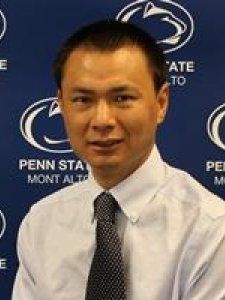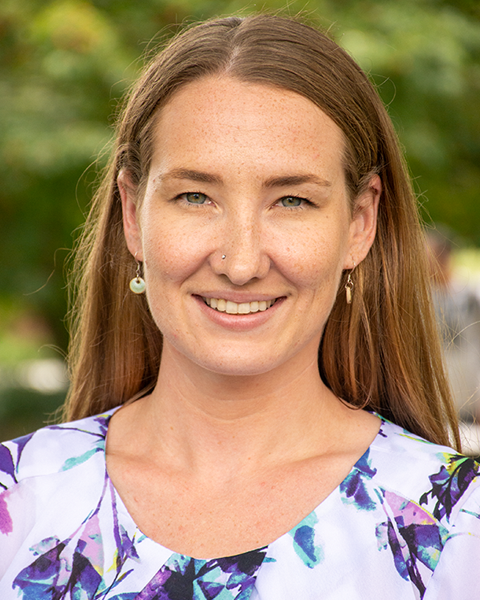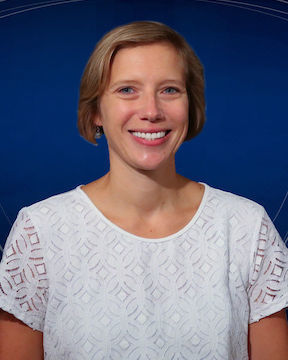Sponsored Research at Penn State Abington, Penn State Great Valley and the University College
Appalachian Trail Conservancy
Study for the presence of coliform bacteria in two South Mountain-originating roadside springs
Jan. 1, 2023 to June 30, 2024
Abstract: In this project, we propose a year-long monitoring of coliform bacteria for two roadside spring water fountains that originate from South Mountain in Franklin County, near Penn State Mont Alto campus (none of the springs studied in the previously cited study were located in Franklin County, though one originated from South Mountain on the Cumberland Adams County border). We propose studying the Tomstown Pump, located at the intersection of Mentzer Gap Road and Tomstown Road in Quincy Township, which is a popular spring water source for many local residents. We also propose studying a roadside spring in Mont Alto State Park, off Pennsylvania Route 233 in Guilford Township.
Chance to Change Lives
AWQUA HAUS
May 1, 2023 to Dec. 31, 2023
Abstract: Water quality data coupled with the emerging field of data science has the potential to expedite scientific research and inform decisions about water resource allocation. We propose to develop a low cost (<$100) water quality sensor to measure heavy metals such as lead and cadmium in domestic water sources. This works builds on a previously developed sensor by our group called the AWQUA (Autonomous Water Quality Utility and Analysis) that measures conductivity, turbidity, and temperature. Similar devices, currently available to researchers, cost between $1,000 and $5,000. Our device, currently under development, would allow for a much greater density of measurements and create a real-time accounting of water quality at the home level. The HAUS (Housing for AWQUA User-friendly Sensor)is a logical expansion and enhancement of the current AWQUA sensor. By building on our successful low-cost water monitor, we are taking advantage of existing expertise in electronics, additive manufacturing and coding. The AWQUA HAUS will cost <$100/unit while returning data comparable to a current sensor and is meant to be easily operated by a citizen scientist and high school students with support from faculty.
Chance to Change Lives
Safe & Efficient Solid-State Hydrogen Storage: Computational Study of MgH2 & Charred Nanomaterials for Controlled Release of H2 and Reduced Fire Risk in Hybrid Energy Systems
May 1, 2023 to Dec. 31, 2023
Abstract: The project will address the challenges associated with the fire risk and safety of using solid-state hydrogen storage materials in HES, specifically on MgH2. The project proposes to use computer simulations to model an MgH2/Char system at the atomistic level, where the role of the fragments of char material is hypothesized to revolve around the catalysis and control of the release of hydrogen gas during dehydrogenation or thermal decomposition while reducing the fire risk by protecting the hydride's surface from the oxidizing layer. In this project, the plan is to involve a 1st-year undergraduate student in various aspects of a research agenda, including computational simulations, data analysis, and scientific writing. By participating in this research, the student will have the opportunity to develop his computational skills, deepen his understanding of materials science, and contribute to cutting-edge research in hydrogen storage.
Lacawac Sanctuary Foundation
Biological Drivers of Cyanobacteria Blooms
Jan. 1, 2023 to Dec. 31, 2023
Abstract: The primary objective of the proposed work is to use an in-situ experimental enclosure to assess the ability of two protistan grazers, Ochromonas and Cryptomonas, to ingest and act as a biological control agent on cyano HABs. The proposed work will focus on Microcystis as a cyanobacteria prey item, as it is one of the most common producers of microcystin and displays a nearly cosmopolitan distribution7. Protistan grazers proposed for experimentation here are established mixotrophs that are native to the NE USA. Previous experimental has established their ability to ingest and survive in co-culture with toxigenic Microcystis. A secondary objective of the proposed work is to overcome the methodological challenges of working with laboratory strains of cyanobacteria. Microcystis strains from culture collections are not observed to form colonies in the laboratory environment. Thus, the proposed work will allow an opportunity to evaluate (a) morphological changes that may occur when Microcystis is grown in a natural environment, (b) inducible morphological changes in Microcystis when it is exposed to a potential protistan predator, and (c) congruency between laboratory and field enclosure-based experiments of a similar nature.
National Science Foundation
Collaborative Research: RUI: Extraordinary circadian clocks in Araneoid spiders: an integrative approach to understanding their evolutionary origins and underlying mechanisms
June 1, 2023 to May 31, 2026
Abstract: Araneoid spider circadian rhythms are unlike most others found on Earth. Contrary to selective pressure favoring circadian clocks with near 24-hour endogenous periods, we have discovered remarkably broad distributions of endogenous free-running periods (FRPs) within and among spider species in the superfamily Araneoidea, including species with mean FRPs that are exceptionally short or long (17.8 - 29.1 hours). Such extreme dissonance between endogenous clock period and the 24-hour solar day typically causes severe negative consequences, such as multiple disease states, reduced, continuous jetlag, etc. However, our survivorship experiments, as well as thriving non-resonant spider species in nature, suggest that spiders are somehow released from these selective constraints. We propose to exploit the apparent evolutionary shift in the functioning of circadian clock systems between araneoid and non-araneoid spider species to identify changes in the clock mechanisms enabling their existence.
National Science Foundation
Collaborative Research: Rational Numbers Playground: Applying and Refining a Model for Dynamic, Discussion-Based PD for Fractions, Ratios, and Proportions
Aug. 1, 2022 to July 31, 2026
Abstract: The Rational Numbers Playground project is a Level II Early Stage, Design & Development Study focused on Teaching/Teacher Knowledge. The proposed outcomes of this work include: a pool of mathematical tasks for teachers that support playful engagement with important mathematical ideas; a guide outlining a coherent 30-hour experience for teachers that engages in developing both content knowledge and pedagogical content knowledge (PCK) related to fractions, ratios, and proportions; evidence of the PD program’s effectiveness that relies on topic modeling to measure change in teachers’ participation in the workshops; data on three different approaches to supporting teachers in linking content knowledge development to PCK development; and a coding framework that defines “robust” understanding of fraction referent units and invariance. All aspects of the professional development will be grounded in the use of dynamic, web-based “toys” (apps) that have been designed to support the development of robust understandings of proportion and fraction concepts.
National Science Foundation
Collaborative Research: Establishing a new model for research-based curriculum development in physics aligned with dual-process theories of reasoning and decision-making
Nov. 1, 2022 to Oct. 31, 2027
Abstract: Despite decades of sustained efforts by discipline-based education researchers to improve student learning of physics and chemistry by developing and implementing research-based instructional materials, emerging evidence suggests that students who demonstrate correct conceptual understanding and reasoning on one task often fail to use the same knowledge and skills on related tasks. Drawing upon dual-process theories of reasoning, researchers have found that student performance on qualitative questions often stems from the interplay between the nature of human reasoning (including for example, cognitive reflection skills) and relevant discipline-specific conceptual understanding (or mindware). There is a need for assessment and instructional tools that can disentangle, to the extent possible, these factors in order to gain greater insight into the reasoning difficulties students encounter when learning physics and chemistry and to subsequently tailor instruction accordingly. This five-year Level 3 Engaged Student Learning collaborative, interdisciplinary research project focuses on introductory physics as well as general and organic chemistry, and aims to: (1) develop, refine, and disseminate an online suite of reasoning-chain construction tools; (2) develop, refine, and disseminate a suite of screening- target question pairs that provide measures of both mindware and the reasoning skills necessary to apply that mindware consistently; (3) generate new knowledge about student reasoning, particularly in regard to the role of domain-general reasoning phenomena; (4) develop instructor guides for the use of screening-target pairs and reasoning chain construction tools for both assessment and instruction.








